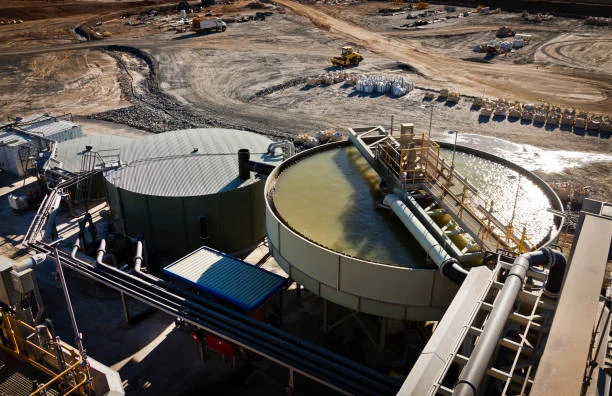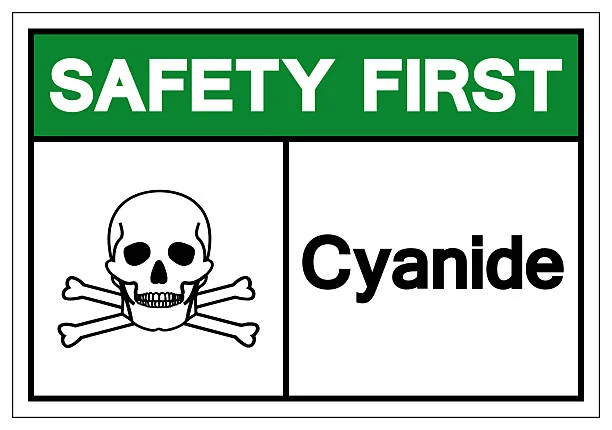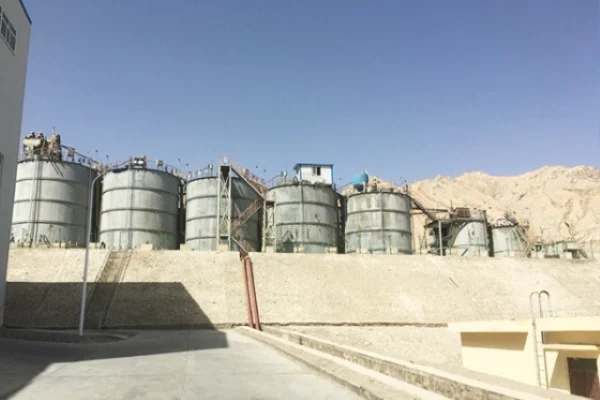
Introduction
In the realm of mining for precious metals such as gold and silver, sodium cyanide has played a pivotal role for over a century. Since its introduction in the 1880s, the use of cyanide - based processes has revolutionized the extraction of these valuable metals from ore bodies. This article delves into the various aspects of using Sodium Cyanide in precious metal mining, including its chemical properties, the extraction process, safety measures, and environmental implications.
Chemical Properties of Sodium Cyanide
Sodium cyanide (NaCN) is a chemical compound composed of sodium (Na), carbon (C), and nitrogen (N). It typically appears as a white, water - soluble solid. Industrially, it can be produced through two main methods. One is by reacting hydrogen cyanide (HCN) with sodium hydroxide (NaOH), and the other is via the Castner process, where sodium amide (NaNH₂) reacts with carbon at high temperatures.
The Cyanide Leaching Process
Ore Preparation
Before the cyanide leaching process begins, the ore containing precious metals must be prepared. This usually involves crushing and grinding the ore into a fine powder. The goal is to increase the surface area of the ore, allowing for better contact between the Sodium cyanide solution and the precious metal particles. For example, in gold mining, if the gold is disseminated throughout the ore in fine amounts, proper grinding can expose more of the gold to the leaching solution.
Leaching
Once the ore is in the appropriate form, a carefully - monitored sodium cyanide solution is introduced. In the presence of oxygen, a chemical reaction occurs. The gold forms a complex with the cyanide ions, creating a soluble gold - cyanide complex. This complex then dissolves in the solution, effectively separating the gold from the rest of the ore matrix. The oxygen in the reaction serves to oxidize the gold, facilitating its dissolution.
Recovery of Precious Metals
After the leaching process, the next step is to recover the precious metals from the solution. One common method is through the use of zinc. When zinc is added to the solution, it displaces the gold in the gold - cyanide complex, turning the gold back into a solid form. This solid gold can then be further processed, typically through smelting, to obtain pure gold.
Types of Cyanide Leaching
Vat Leaching (Controlled Mills)
Also known as vat leaching, this process often takes place in a specialized mill located on the mining premises. Finely crushed ore is exposed to the cyanide salt solution. The solution binds with the ions in the precious metals, allowing them to separate out into the solution. However, factors such as the presence of different elements in the ore can affect the efficiency of this process. For instance, some elements may react with the cyanide or the precious metals, interfering with the formation of the soluble complex. Additionally, while the introduction of more oxygen can speed up the leaching process, this is not always done in mills due to cost concerns.
Heap Leaching
Heap leaching is another widely used method. In this process, the crushed ore is piled into large heaps. The sodium cyanide solution is then sprayed over these heaps. As the solution trickles through the ore, it dissolves the precious metals. Heap leaching is more cost - effective compared to vat leaching, especially for low - grade ores. It also has the advantage of adding oxygen to the mix naturally as the solution percolates through the ore. However, a major drawback is the difficulty in controlling the fate of the toxic cyanide solution after it has completed the leaching process.
Safety Measures
Despite its effectiveness in precious metal extraction, sodium cyanide is highly toxic. In both its solid and gaseous forms, it can be lethal if ingested or inhaled. However, in the mining industry, strict safety measures are in place. The concentration of cyanide in the extraction solution is kept extremely low, usually in the range of 100 to 500 parts per million. Workers handling sodium cyanide, whether in the form of solid briquettes or solutions, are required to wear appropriate personal protective equipment, such as masks to protect against airborne dust or gases containing trace amounts of cyanide. In fact, in North America and Australia, there has not been a cyanide - related death among mine employees in over 100 years, demonstrating the effectiveness of these safety protocols.
Environmental Implications
One of the major concerns regarding the use of sodium cyanide in mining is its potential environmental impact. If the cyanide solution leaches into surface water, it can have severe consequences. Fish are known to be over a thousand times more sensitive to cyanide than humans. Pollution from cyanide can disrupt native ecosystems, harming aquatic life and potentially affecting the entire food chain. To mitigate these risks, mining companies implement various environmental management strategies. These include the use of lined ponds to store the cyanide solutions, proper containment systems to prevent leaks, and treatment processes to detoxify the cyanide - containing wastewater before it is discharged.
Conclusion
Sodium cyanide remains an essential chemical in the mining of precious metals. Its ability to efficiently extract gold, silver, and other valuable metals from ore has made it a cornerstone of the modern mining industry. However, the associated risks, both in terms of safety and the environment, cannot be overlooked. Through the implementation of strict safety protocols and advanced environmental management practices, the mining industry continues to use sodium cyanide in a responsible manner, balancing the need for precious metal extraction with the protection of human health and the environment. As technology advances, it is likely that even more efficient and environmentally friendly methods of precious metal extraction will be developed, but for the foreseeable future, sodium cyanide will continue to play a significant role in this important industry.
- Random Content
- Hot content
- Hot review content
- industry Electric Detonator
- Antimonium Tartrate Potassium
- Dodecylbenzenesulfonic acid
- Phthalic anhydride
- Di(ethylene Glycol) Vinyl Ether
- Zinc sulfate monohydrate 98% Industrial & Feed Grade
- Copper Sulfate Monohydrate (CuSO4-H2O) Powder (Cu:34% Min)
- 1Discounted Sodium Cyanide (CAS: 143-33-9) for Mining - High Quality & Competitive Pricing
- 2China's New Regulations on Sodium Cyanide Exports and Guidance for International Buyers
- 3Sodium Cyanide 98% CAS 143-33-9 gold dressing agent Essential for Mining and Chemical Industries
- 4International Cyanide(Sodium cyanide) Management Code - Gold Mine Acceptance Standards
- 5China factory Sulfuric Acid 98%
- 6Anhydrous Oxalic acid 99.6% Industrial Grade
- 7Oxalic acid for mining 99.6%
- 1Sodium Cyanide 98% CAS 143-33-9 gold dressing agent Essential for Mining and Chemical Industries
- 2High Quality 99% Purity of Cyanuric chloride ISO 9001:2005 REACH Verified Producer
- 3Zinc chloride ZnCl2 for High Molecular Weight Polymers Initiator
- 4High Purity · Stable Performance · Higher Recovery — sodium cyanide for modern gold leaching
- 5High Quality Sodium Ferrocyanide / Sodium Hexacyanoferr
- 6Gold Ore Dressing Agent Safe Gold Extracting Agent Replace Sodium Cyanide
- 7Sodium Cyanide 98%+ CAS 143-33-9











Online message consultation
Add comment: